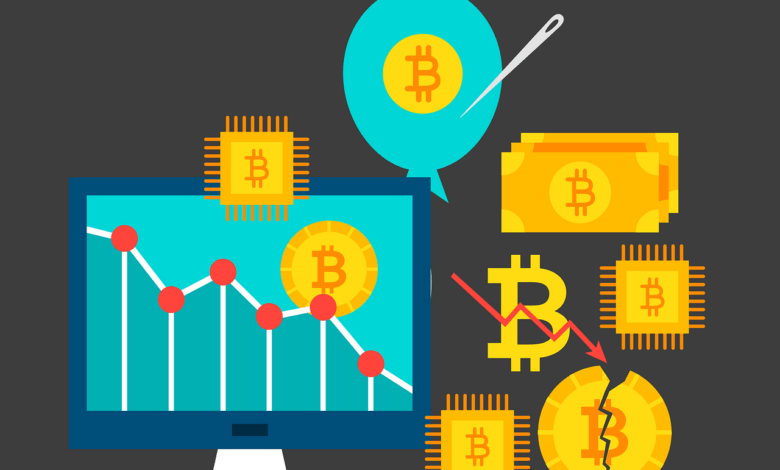Unlocking the Secrets of Smart Contract Vulnerabilities

In the rapidly evolving landscape of blockchain technology, smart contracts have emerged as transformative instruments, enabling decentralized applications to function autonomously. Yet, as their popularity burgeons, so too does the necessity for a thorough understanding of their inherent weaknesses. Grasping the vulnerabilities embedded within these digital agreements is not merely an academic exercise; it is a crucial endeavor that bears significant implications for developers, investors, and users alike.
Analyzing smart contract flaws requires a meticulous approach, for the risks associated with these vulnerabilities can lead to catastrophic consequences. These contracts operate on immutable ledgers, meaning that once deployed, any oversight or error becomes permanent, often resulting in financial losses or compromised security. The effects of such weaknesses are not confined to individual users; they reverberate throughout the ecosystem, undermining trust and stability in blockchain technologies as a whole.
As we delve deeper into the intricacies of smart contracts, it becomes imperative to comprehend not only the technical specifications but also the broader context in which these systems operate. The implications of overlooked vulnerabilities can cascade through networks, affecting countless stakeholders. Therefore, fostering a robust understanding of these potential pitfalls is essential for anyone engaged in the development or utilization of smart contracts. In this exploration, we will dissect common vulnerabilities and analyze their associated risks, ensuring that we cultivate a resilient framework for future innovations in this exciting domain.
Understanding Smart Contract Vulnerabilities
In the burgeoning landscape of blockchain technology, smart contracts have emerged as a groundbreaking innovation, enabling self-executing agreements without the need for intermediaries. However, as their usage increases, so too does the importance of analyzing the inherent vulnerabilities within these contracts. Grasping the implications of these flaws is essential for both developers and users alike, as the consequences of oversight can be severe, leading to significant financial losses and undermining trust in the technology.
One of the primary risks associated with smart contracts lies in their code. Much like traditional software systems, smart contracts are susceptible to coding errors and logical flaws that can be exploited by malicious actors. For instance, the infamous DAO hack in 2016 demonstrated how an overlooked vulnerability could lead to the loss of millions of dollars in Ether. Analyzing such incidents reveals that even minor oversights can have catastrophic effects when they occur within a decentralized and immutable environment.
Comprehending these weaknesses requires an understanding of common vulnerabilities such as reentrancy attacks, integer overflows, and gas limit issues. Each of these flaws represents a different avenue through which attackers can manipulate contract behavior to their advantage. For example, a reentrancy attack allows an attacker to repeatedly call a function before the previous execution is completed, potentially draining funds from the contract. This highlights the necessity for rigorous testing and audit processes that can help identify and mitigate such vulnerabilities before deployment.
Moreover, the implications of these vulnerabilities extend beyond immediate financial loss. When a smart contract is compromised, it can lead to broader repercussions for the entire ecosystem. The Ethereum network, for instance, faced significant scrutiny and price volatility following high-profile hacks. Thus, understanding these risks is crucial not only for individual project stakeholders but also for maintaining overall market stability and investor confidence in blockchain technologies.
Furthermore, grasping the consequences of smart contract vulnerabilities is integral to fostering responsible development practices within the industry. Developers should prioritize security measures such as formal verification, thorough testing, and community audits to enhance their contracts’ resilience against potential exploits. By committing to best practices in smart contract development, we can reduce risks and promote a safer environment for all participants in the blockchain space.
In conclusion, while smart contracts offer remarkable benefits in terms of efficiency and transparency, their vulnerabilities present significant challenges that must be addressed proactively. Analyzing flaws and comprehending their implications are vital steps toward creating robust solutions that safeguard user assets and uphold the integrity of blockchain technology. As we continue to innovate in this field, it is imperative that we remain vigilant against potential threats and committed to improving our understanding of these complex systems.
Understanding Smart Contract Vulnerabilities and Their Implications
In the burgeoning world of blockchain technology, smart contracts have emerged as a revolutionary force, enabling automated and trustless transactions. However, they are not devoid of vulnerabilities that can lead to catastrophic consequences. By grasping the common types of vulnerabilities inherent in these digital contracts, we can better comprehend the risks they pose. The effects of these flaws can range from financial losses to irrevocable damage to reputations, emphasizing the urgency of addressing them.
One prevalent category of vulnerabilities stems from coding errors and oversights during the development phase. For instance, reentrancy attacks exploit the manner in which contracts interact with one another, allowing malicious actors to drain funds by repeatedly invoking a contract before its state is updated. Analyzing such flaws reveals not just a technical oversight but also highlights the implications of inadequate testing and auditing processes. Without rigorous scrutiny, even simple logical mistakes can result in substantial financial ramifications.
Another significant vulnerability arises from improper access controls. Smart contracts often require specific conditions for execution; however, when these conditions are poorly defined or left unchecked, unauthorized users may exploit them. Take the infamous DAO hack as a case study–this incident exposed a fundamental weakness in access permissions that led to the theft of millions in Ether. Comprehending the consequences of such breaches emphasizes the necessity for meticulous design and verification protocols.
The risks associated with vulnerabilities in smart contracts extend beyond immediate financial loss; they can have broader implications for user trust and market stability. As decentralized finance (DeFi) platforms grow in popularity, a single exploit can erode confidence not only in an individual project but also in the ecosystem at large. Analyzing historical cases of contract failures illustrates how interconnected these systems are and the cascading effects that can arise from a single point of failure.
Moreover, smart contract weaknesses are often exacerbated by their transparent nature on blockchain networks. While transparency is generally viewed as an asset, it also means that malicious actors can easily study contracts for potential exploits. The challenge lies in creating robust security measures while maintaining this transparency. Grasping this balance is critical for developers seeking to build resilient systems that withstand scrutiny from both users and adversaries alike.
In conclusion, comprehending smart contract vulnerabilities is essential for anyone involved in blockchain technology–whether as a developer, investor, or user. The associated risks and their potential consequences necessitate a proactive approach to security measures, including thorough testing, continuous monitoring, and community engagement. By fostering an environment that prioritizes security awareness and education, we can mitigate the impact of these vulnerabilities and pave the way for a more secure digital future.
Implications of Security Breaches in Smart Contracts
In the realm of decentralized finance (DeFi) and blockchain technology, smart contracts have emerged as a revolutionary mechanism that automates complex processes without intermediaries. However, the very nature of these contracts has exposed them to various vulnerabilities. Comprehending the weaknesses inherent in smart contract design is crucial for developers and investors alike. For instance, improperly implemented logic can lead to unexpected behaviors, allowing malicious actors to exploit these flaws and execute unauthorized transactions. The implications of such security breaches extend beyond financial loss; they undermine the foundational trust in blockchain systems.
Grasping the associated risks involves a thorough analysis of common vulnerabilities, such as reentrancy attacks, integer overflows, and improper access control. Each flaw presents unique challenges that can have profound effects on the overall ecosystem. A notable example is the DAO hack of 2016, where attackers exploited a reentrancy vulnerability, resulting in a loss of $60 million worth of Ether. This incident not only highlighted the potential consequences of poor coding practices but also triggered a significant crisis in confidence among investors and developers. The fallout from such breaches can lead to regulatory scrutiny and a reevaluation of security protocols within the industry.
The consequences of security breaches are multifaceted and often result in a ripple effect across various stakeholders. For developers, a failure to address vulnerabilities may lead to reputational damage and diminished user trust. Investors face the risk of losing their assets due to exploits that could have been prevented with proper auditing and testing procedures. Furthermore, end-users are left vulnerable when platforms do not prioritize security measures, creating an environment ripe for exploitation. The interconnectedness of these elements underscores the importance of adopting a proactive approach to smart contract security.
In conclusion, analyzing smart contract flaws and their associated risks is imperative for fostering a secure blockchain environment. As the technology continues to evolve, so too must our understanding of its vulnerabilities and their implications. By prioritizing security best practices and conducting rigorous audits, we can mitigate risks and enhance trust within the ecosystem. Ultimately, the future of smart contracts hinges on our ability to comprehend their weaknesses–ensuring that their transformative potential is realized without compromising safety or integrity.
Conclusion: Navigating the Complex Landscape of Smart Contract Vulnerabilities
As we delve into the intricate world of smart contracts, it becomes imperative to recognize that understanding their inherent weaknesses is not merely an academic exercise; it is a vital endeavor for anyone engaged in blockchain technology. The implications of these weaknesses are profound, as they can lead to vulnerabilities that may compromise entire systems, resulting in significant financial losses and erosion of trust. In comprehending the associated risks, we uncover the necessity of adopting best practices that shield our digital assets from potential pitfalls.
In analyzing smart contract flaws, we must grasp the multifaceted nature of these vulnerabilities. Each contract embodies a unique set of conditions and interactions that can be exploited if not meticulously designed. For instance, a simple oversight in coding can open doors to reentrancy attacks or gas limit issues, which may have cascading effects on the broader ecosystem. Therefore, it is crucial to engage in rigorous testing and peer review processes to mitigate these risks effectively.
Best Practices for Prevention:
- Thorough Code Audits: Regular audits by experienced professionals are essential for identifying and rectifying flaws before deployment.
- Testnet Deployment: Utilizing test networks allows developers to scrutinize contracts in a controlled environment, minimizing unforeseen consequences.
- Formal Verification: Employing mathematical proofs can significantly bolster confidence in the reliability of smart contracts.
- Community Engagement: Encouraging collaboration and feedback from the blockchain community fosters a culture of transparency and improvement.
The journey toward enhancing our understanding of smart contract vulnerabilities is ongoing. As we continue to explore the implications of these technologies, let us embrace a mindset rooted in curiosity and vigilance. By proactively addressing the weaknesses within our contracts and recognizing their potential effects, we pave the way for a more secure and resilient future in the realm of blockchain innovation. The stakes are high, but with diligence and collective effort, we can navigate this complex landscape with confidence.





